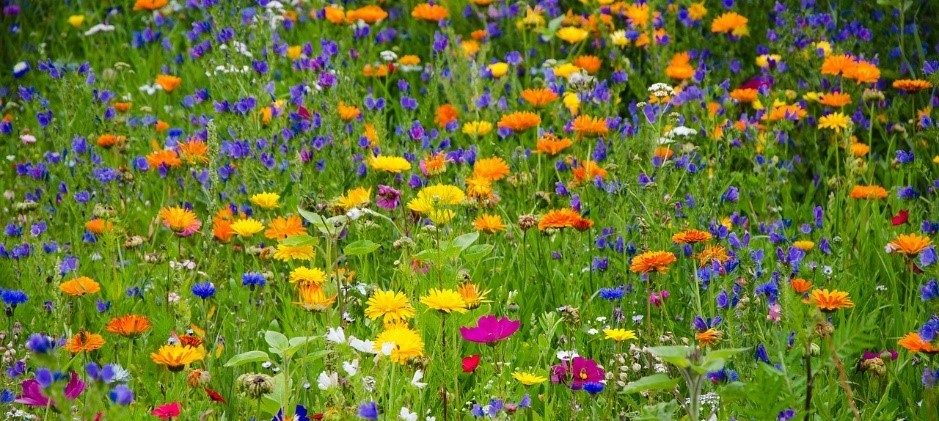We’ve been very busy this Winter and have enjoyed the festivities in the lead up to Christmas. Here is a little poem about some of the fun we’ve had at the Stornoway Childcare Centre and within our local community…
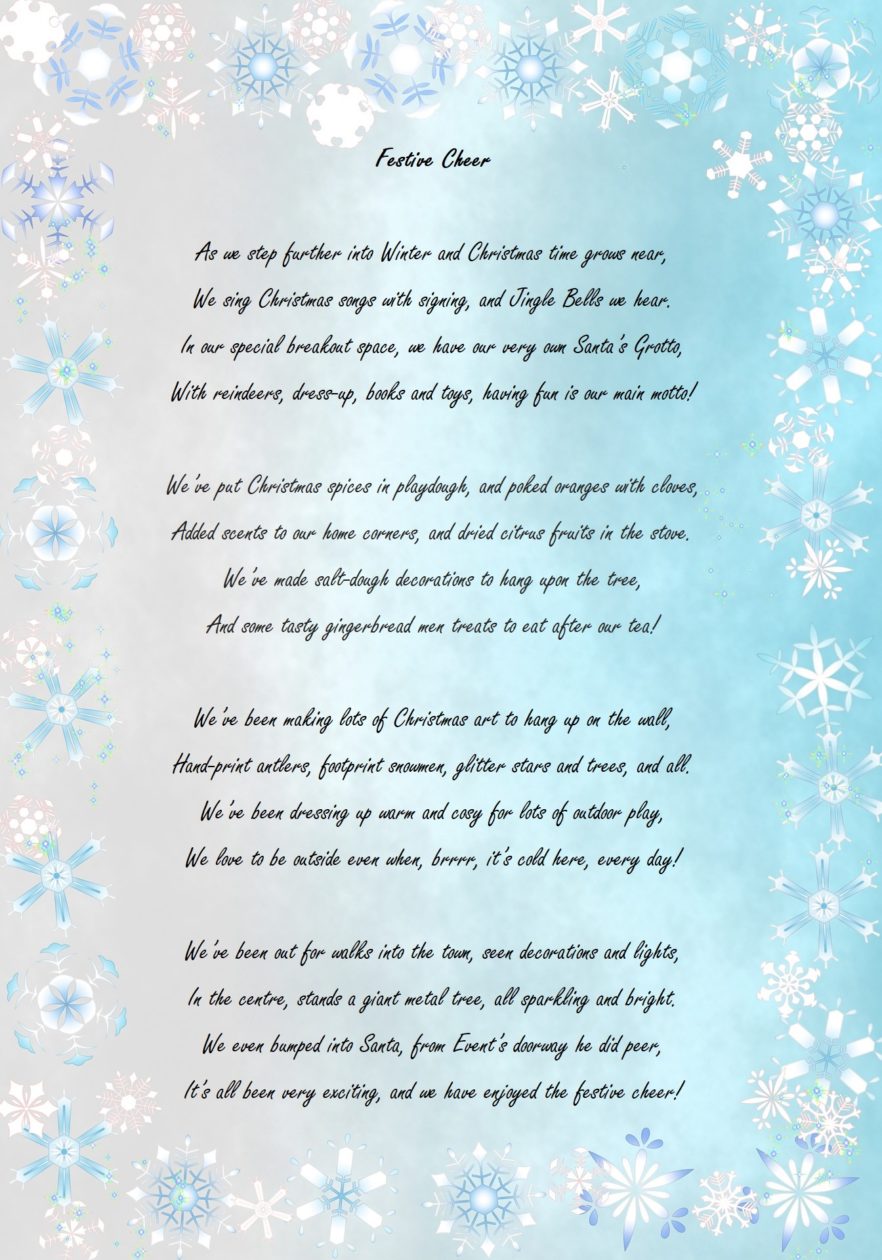
We’ve been very busy this Winter and have enjoyed the festivities in the lead up to Christmas. Here is a little poem about some of the fun we’ve had at the Stornoway Childcare Centre and within our local community…

Looking At
We started this week’s enquiry based around the children’s interest in the unexpected downfall of snow. The children were exploring the snow in our outdoor area going through the trees over different levels (where there were mounds of earth and grass under the snow) and finding their balance. The children were also picking up the snow and “posting” it through the fence. We recognised this as the schema based play, “transporting”. The children were also interested in the snow that was on the slide, so we went to pick it up and have a look at it and realised there was ice underneath, with a layer of impacted snow and then soft snow on top. One of the children wanted to hold it and when a member of staff passed it to them, they dropped it because of the cold ice underneath. We then thought it would be a good idea to make footprints on the ground and prompted the children to have a look at them.
There was lots of communication from the children about the snow whilst making snowy artwork and on a visit to our favourite nearby community garden –
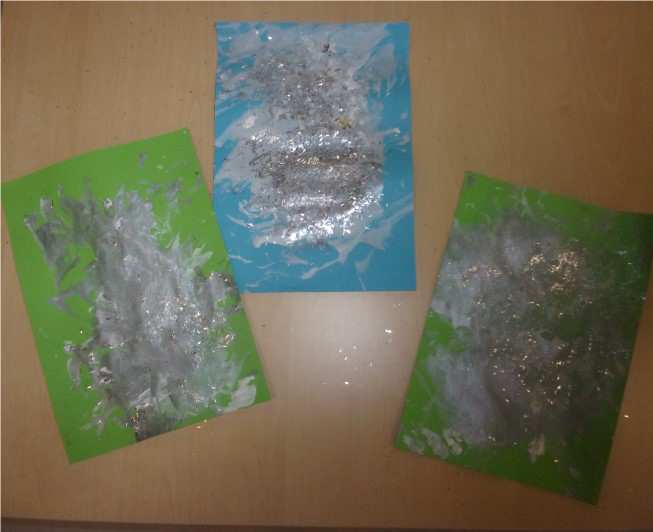
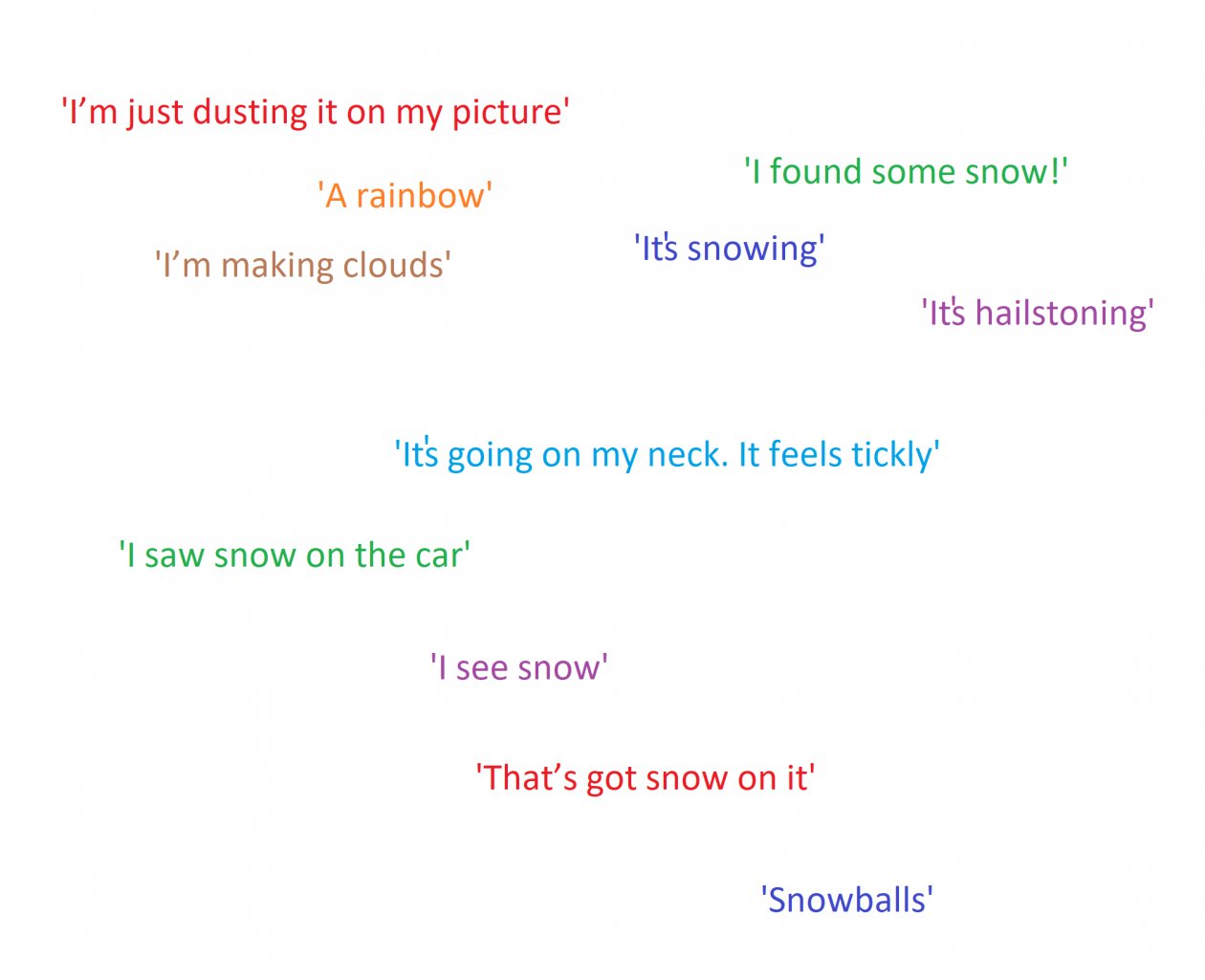
The children then went on to make a footprint masterpiece! They were very proud of their work, standing for a photo where it was displayed on the wall

Looking Under
Following on from the previous week’s provocations, we took the lead from the children’s interests and the activity that they enjoyed the most – making wellington prints. Therefore, for this week’s lines of enquiry, we linked to the previous theme and decided to “Look Under” our feet at footprints!
So we started off with introducing clay in the playroom first, encouraging children to explore with their hands so as to familiarise themselves with the texture. This is an activity that is new to this particular group and is a Froebelian approach that we plan to develop further as part of an Improvement Project within the setting. We then took the tuff tray outside, added a little water to some clay and put it in the centre. The children watched intently with slight puzzled looks on their faces as it was poured in. We were unsure if the children would be keen to try putting their bare feet in the clay but we asked if anyone wanted to take off their socks and shoes to try it and before we knew it nearly all the children had removed them to give it a go!
The first child to give it a try was a little unsure what to make of it. The child put their foot into the lump of clay and dragged their foot backwards across the tuff tray, leaving streaked prints from their toes. The child continued to put their foot in the clay and make footprints, becoming more comfortable with the feel of it and looking under foot to see what it looked like. The children took a turn each then to explore the clay with their feet. It became increasingly slippy as the children played in it so an adult was required to help support the children so as to ensure they did not fall. This caused much hilarity as the children slipped back and forth!

‘It’s clay’
‘I liked that, it was really funny’
‘It’s tickly’
‘It’s really slippy’
To further extend our ‘looking under’ activity, we did some print-making. We collected lots of natural items like acorns, flowers and sticks to push into our clay to make some prints into it. We encouraged the children to roll it out themselves and pick what they would like to put into their clay.


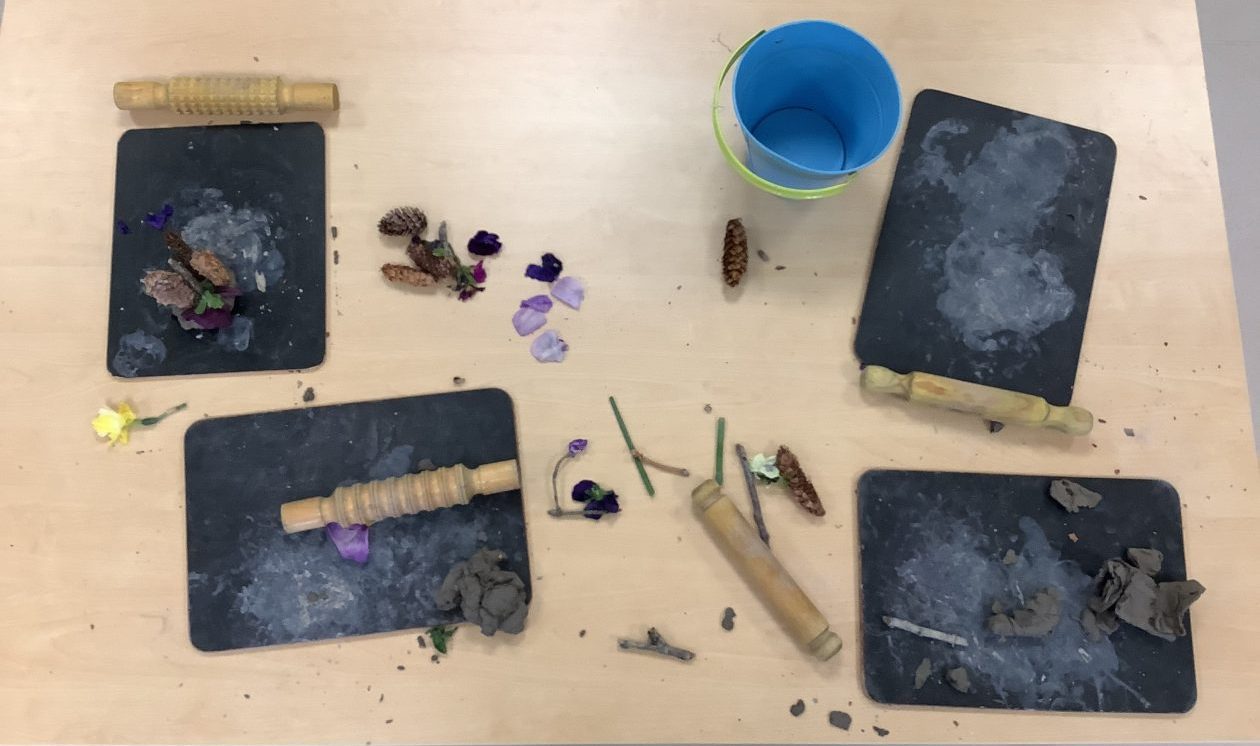

Our Palm Trees
We are very lucky to have these tropical trees in our outdoor space! When we were playing in the garden recently, a lady who was passing by stopped to speak with a member of our staff team, explaining that when she had worked here over 20 years ago, these tall trees started out as such little plants! They are now a very special part of our garden so it was lovely to hear the story about how they began. We have contacted the lady we met that day, Margaret Doig, and she has very kindly shared the story in writing with us so that we can also share it with you all.
Almost 25 years ago, when I was teaching in what was then the Infant Dep of Stornoway Primary (Room 4 to be exact) a pupil in my P2 class brought a small plant for us to look after. The children took turns with watering duties and the little plant flourished. So much so that we took cuttings which also grew well. At the end of the school year, we planted the little “trees” outside in a couple of half barrels for the holidays and on our return, were delighted to see they survived the Summer.
We were able then to watch from the classroom window as they continued to grow until they burst out the pots and we decided to plant them into the ground directly outside the classroom. Although we called them our Palm trees, I believe they are actually Cordyline.
In August 2000, I moved back over to the “BIG” side, leaving them behind and a year later left the school altogether to raise my family.
When recently visiting the school, I was delighted to see that our little plants had grown to such an enormous height. They give a fabulous tropical feeling to the area…all we need now is some sunshine!
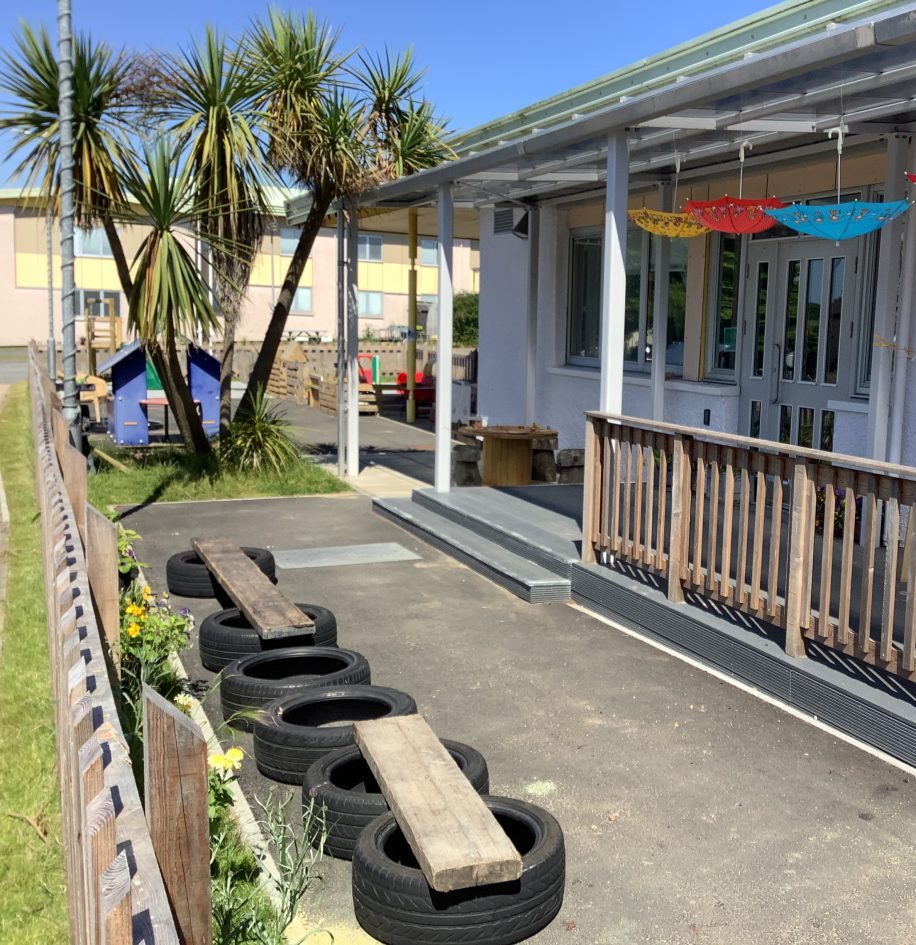
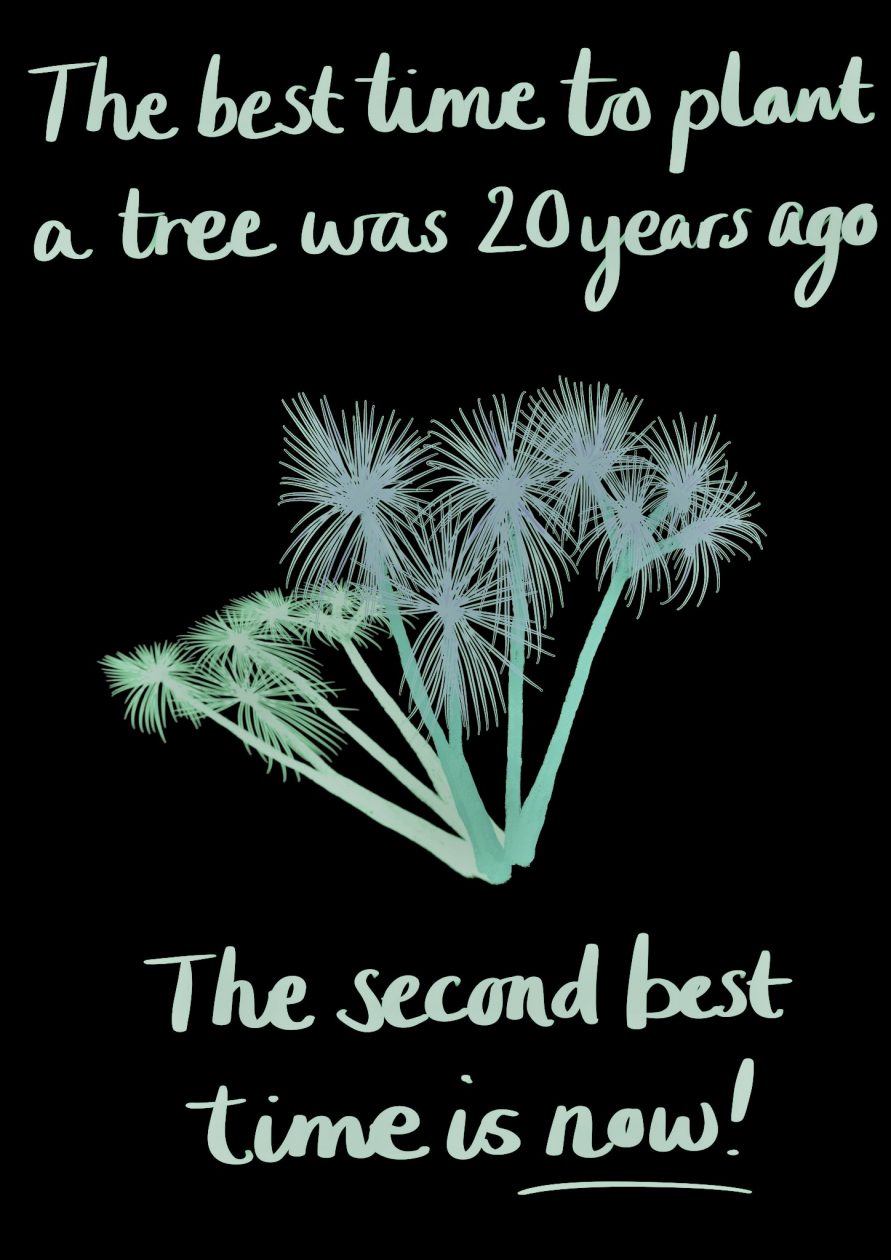
Over recent weeks, we have been taking care of the seedlings in the trays in our garden and watching as they grew. The time finally came to plant the wildflowers out into the Castle Grounds! So we met up with Jack, the Head Gardener from the Stornoway Trust at the steps in front of the Castle where we had stopped for a picnic snack.
Jack took us on a walk along one of the new paths through the trees, we stopped to smell the wild garlic and to feel the leaves from the Great Mullein (“Verbascum thapsus”) plant which were the softest leaves ever to the touch! The children talked about how soft they felt and one child even picked up another leaf that had fallen from a tree and was rubbing it between their fingers, saying ‘look how soft this is’, passing it on for others to touch.
We carried on down the path to a special spot where all our plants were there waiting for us – both the trays taken to the Trust Plant Nursery as well as the ones left with us to take care of ourselves in our garden.

The children were happy to get stuck in with the digging and planting with a bit of adult support. They were keen to help and were so careful with the plants, placing them into the holes dotted around the area and patting them in ever so gently. What a fantastic job they all did!! One child in particular was very excited to be using real gardening tools, making great effort to try and dig to get the final plants in the ground. This little Apprentice was doing so with such enthusiasm that when Jack helped to put the final plants down, the child even said ‘Good job!’ to Jack!
So after that, there was a little treat in store for the children… Jack took us down a secret pathway for a sneak preview of the new Gruffalo trail before it was even open to the public!! We were very lucky to get to be the first to experience this exciting new addition to the Castle Grounds.

The children were so excited to come across the mouse, the owl, the fox, the sssssnake, and best of all the Gruffalo with purple prickles all over his back! The children recognised the Gruffalo, calling him by his name, though a couple children decided instead to call him ‘the crocodile!’. We had a brilliant morning out in the Castle Grounds and would highly recommend a little walk up the secret path to see the Gruffalo… the trail is now open to the public! So take a wander… past cuddy point and up the steep path and you might find your way through the trees to the beginning of the trail that leads you up to the Lady Matheson monument… keep your eyes peeled for the special creatures along the way!

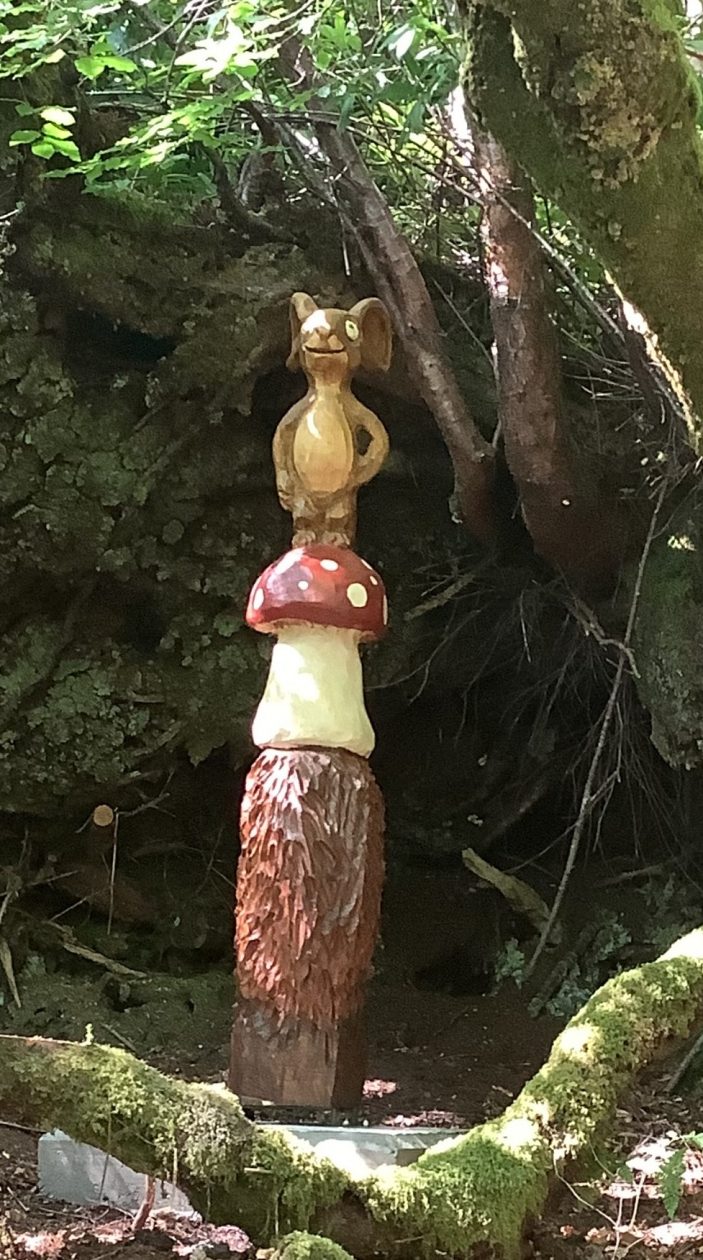
Looking In
“For this week’s provocations, we started off the week by watching the Virtual Nature School videos to introduce the idea of “Looking In”. There was lots of discussion around bird’s nests as you can see on the mind-mapping diagram.”
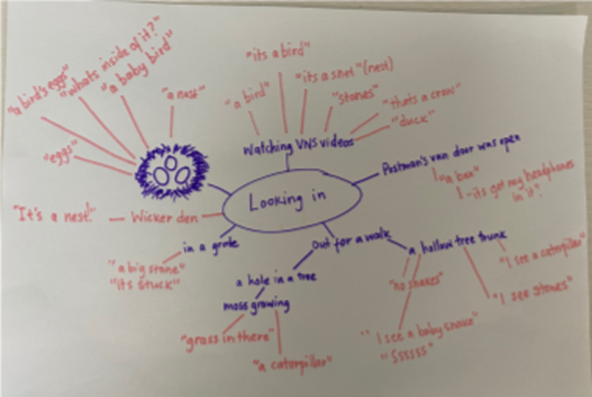
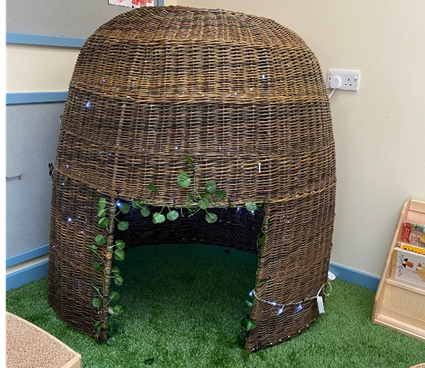
“One child saw this den in the nursery and exclaimed, ‘It’s a nest!’, making the connection between what they could see, to what we had been talking about together previously.”
“The children from the Little Ramblers and Little Adventurers rooms joined together and went for a walk into our local community where the children had plenty of opportunities to “look in”. Once we got to our woodland area, the Castle Grounds, we went to search for natural objects. We found a hole in a tree where there was moss growing inside of it. The children noticed it themselves and said, ‘grass in there’ and ‘a caterpillar’.”
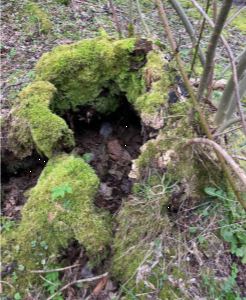
“We continued our search and came across the hollow tree trunk in the picture above. It had leaves, stones and moss inside. The children went over to look in it with encouragement. When looking in, they said, ‘No snakes’, ‘I see a caterpillar’, ‘I see stones’, ‘I see a baby snake’ and one of the children started imitating the noise of a snake whilst playing with a stick. Since the children mentioned caterpillars and snakes to describe the moss, twigs and sticks, we thought it would be an interesting idea to do transient art with natural resources.”

“The children joined together again on a “Daily mile” walk and a visit to the nearby community area, Goathill Garden, in search of natural resources to collect into their backpacks. En route, we found some moss on walls and fences which we collected a little of from here and there. The children gently touched the moss with their fingers. We stopped at a grassy area and went in amongst the trees to collect more. The children went searching and found lots of different sizes, textures and shades of green moss and collected it, along with other natural objects, including pinecones and sticks. One child asked if a stick would fit in the bag, ‘Will it go in there?’. One of the bags was especially full and a child said to one of the adults, ‘There’s sticks and leaves in there. Its heavy. Feel it, Kelly’.
‘I found a stick’, one child exclaimed and on the rest of our walk, the child tapped it along the wall, saying ‘I’m boffing the wall with my stick!’. At the nearby garden, some children helped to gather more items and vocabulary such as ‘stones’, ‘sticks’, and ‘leaves’ were mentioned by many of the children. There was lots of moss on the ground that appeared to have fallen from the trees, some of which even had bark attached. The children picked things up with their hands, and they touched, felt, held, poked and squashed the different types of moss. One child touched some moss growing on a tree and said, ‘It’s fluffy’. When asked what the moss felt like, two other children also gave the descriptions, ‘Really soft’, and ‘It feels like snow’.”
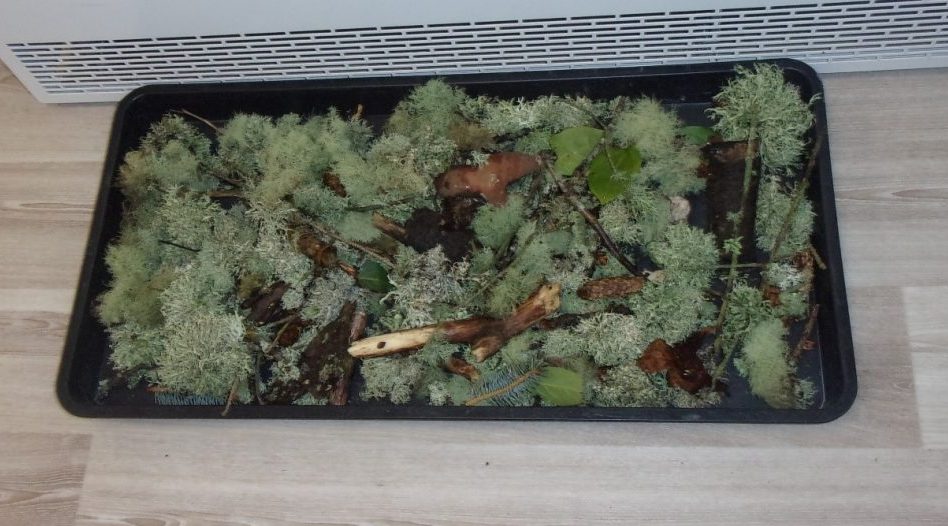
Here are some of the fantastic “transient art” creations that the children made –
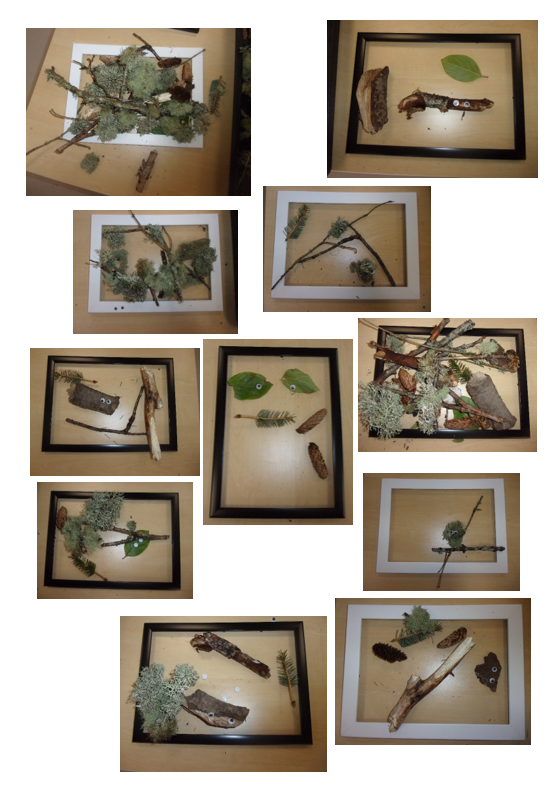
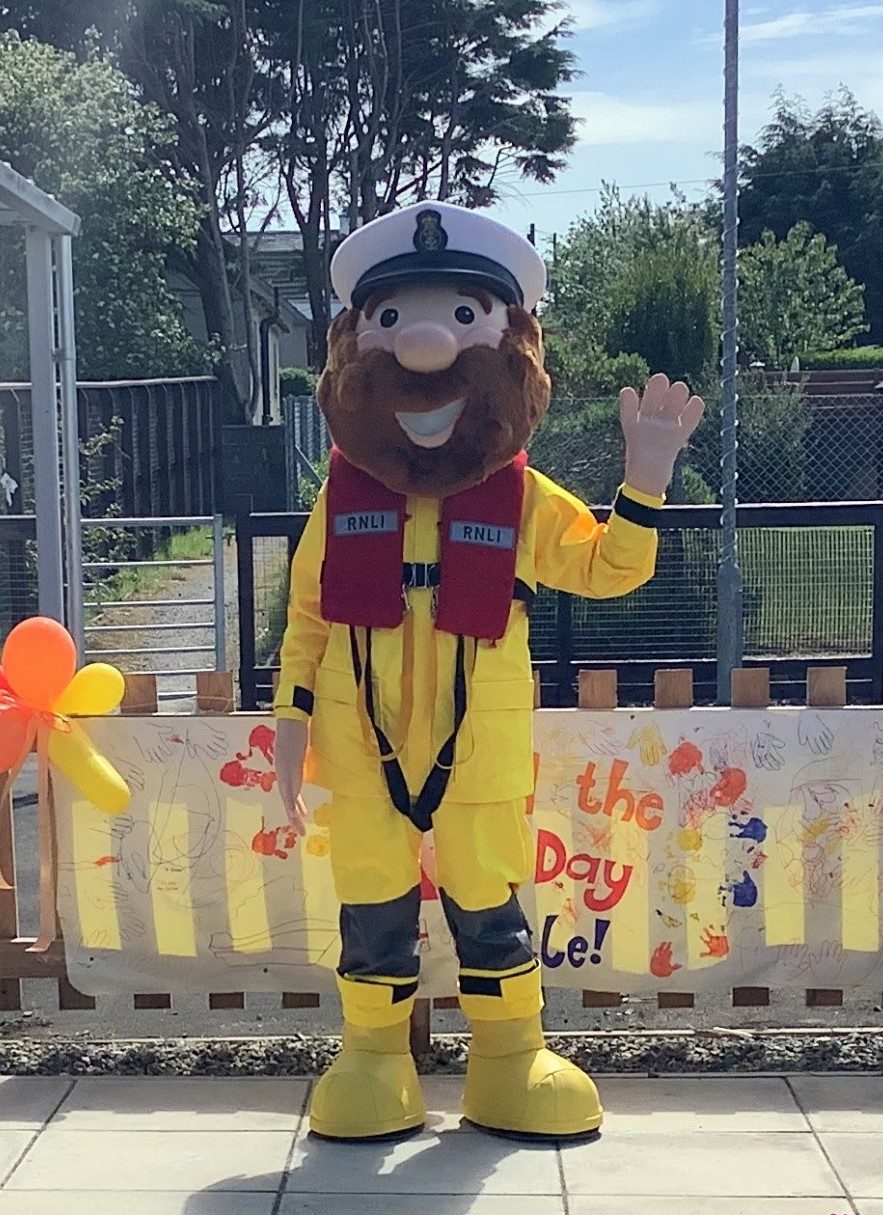
Following on from the Mayday Mile fundraiser that the Little Adventurers and Little Ramblers participated in, we contacted the local branch, Stornoway RNLI and arranged for a very special visitor to come and see the children… Stormy Stan!
The children created a banner with some adult support to celebrate that they had completed the Mayday challenge together. We displayed the banner along with balloons and the children enjoyed playing with some balloons in our garden. We watched a video of Stormy Stan dancing before he came and so we had a little party, dancing to music too.
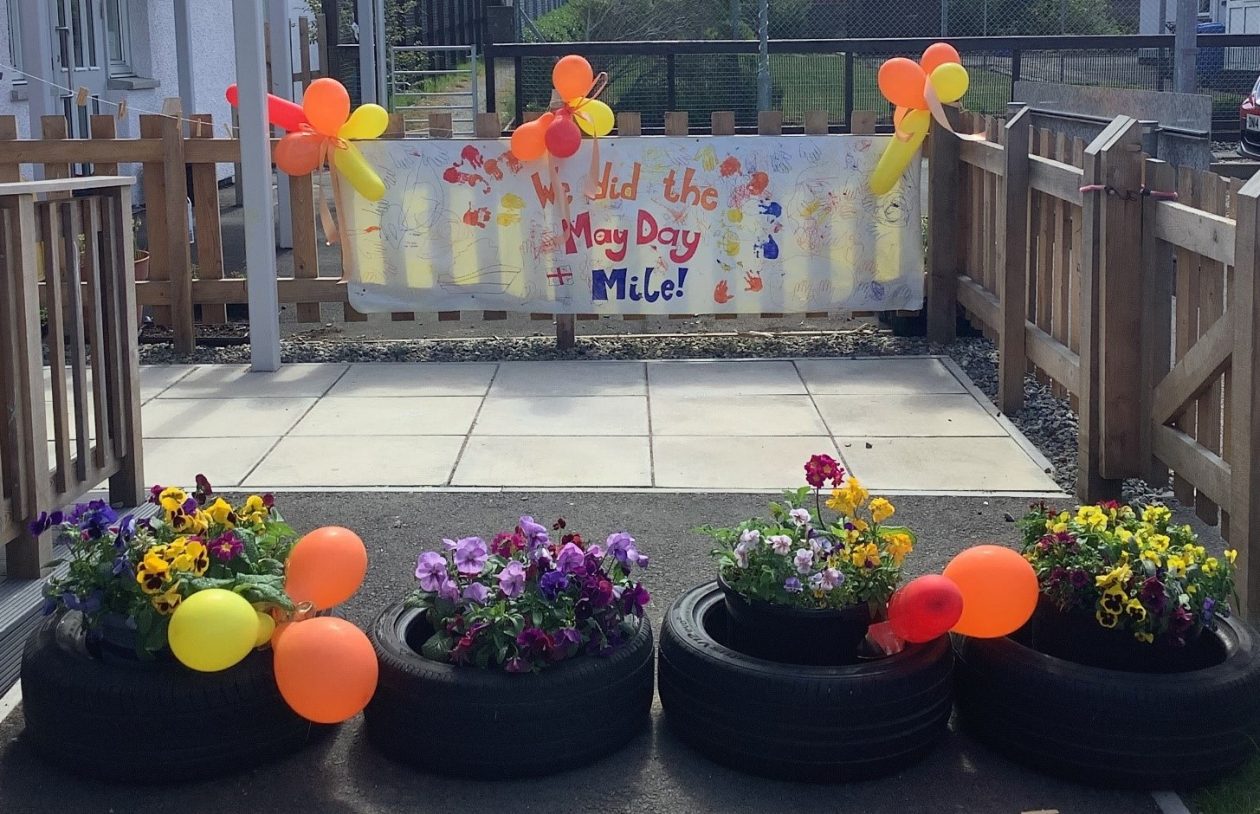
We saw Stormy Stan walking down Jamieson Drive and there was a sense of excitement as he came closer. The children greeted Stormy Stan when he arrived and he came into a section of the outdoor area where the children could see him better. We showed Stormy Stan our best dance moves and he gave the children a big clap!
Stormy Stan’s buddy thanked us for all the walking we’ve been doing and for the money we raised for the RNLI. The children then sat for a photo with Stormy Stan before he had to head back to the harbour to work on polishing the lifeboat. It was nice to meet you, Stormy Stan!

Our Mayday Mile Fundraising Efforts for RNLI
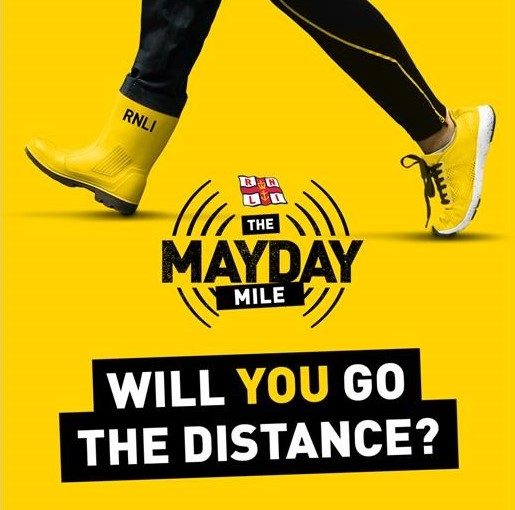
The “Daily Mile” is an important part of our day at nursery and when a member of our staff team saw that the Royal National Lifeboat Institution (RNLI) were doing a fundraiser, “The Mayday Mile”, it was thought that it would be an ideal way for us to get involved. The children have been participating by walking a mile, where possible, on a daily basis. You may have spotted us out and about in the community with reigns and high-vis vests on!
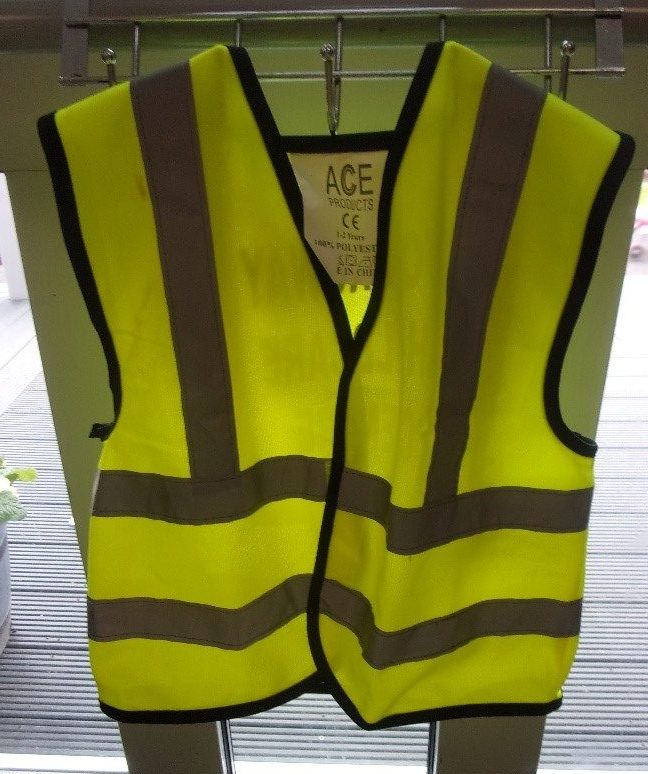
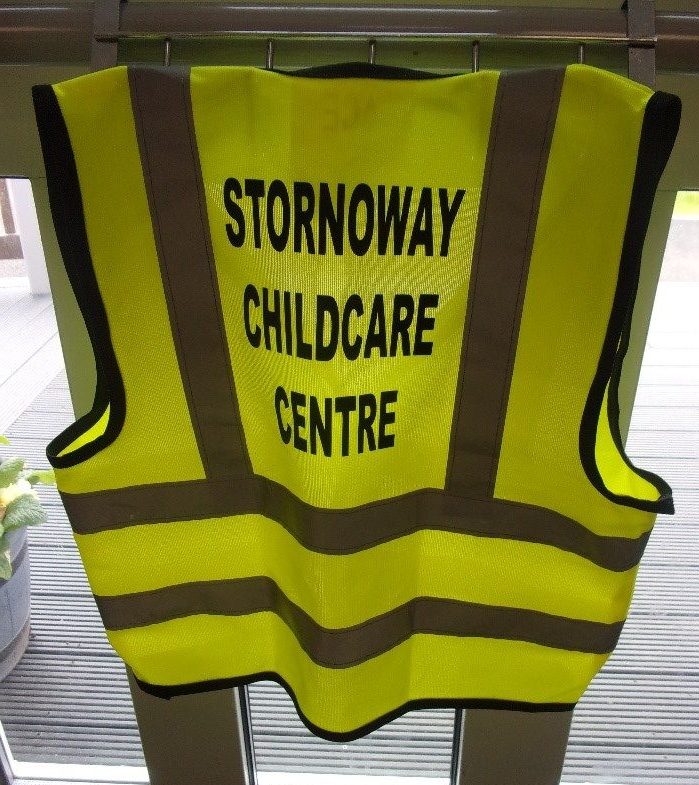
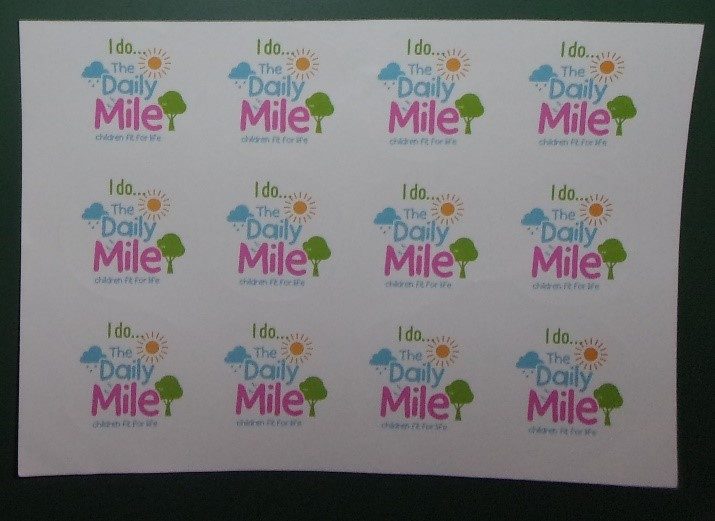
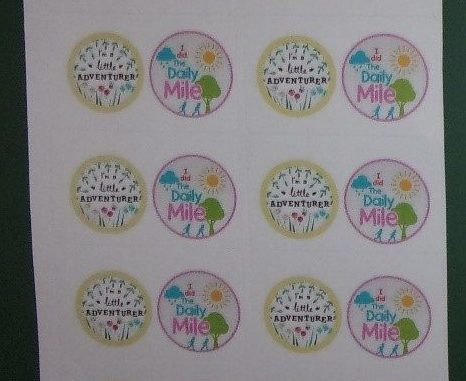
The children have been getting stickers for their fantastic efforts and have now completed their May Day Mile Challenge! Well done to all the children for having achieved this. We are currently in the process of setting up a fundraising group at the centre so in future, we will be able to ask outwith the nursery for contributions. On this occasion, the staff team have pitched together to raise some funds for the RNLI so we have donated £80 on behalf of all at the Stornoway Childcare Centre.
Our “Virtual Nature School” Blog
Looking Through
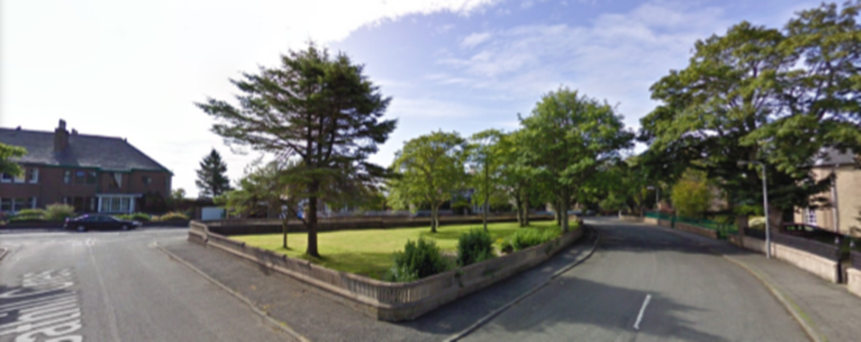
“On our daily mile walk, the Little Adventurers stopped at Goathill Garden (a nearby enclosed garden with trees, bushes and picnic benches) to check if the bird feeder we had put there needed topping up. While we were there, the children enjoyed playing hide and seek in the bushes and running in amongst the trees. Looking through the bushes a child could see ‘a leaf’ and another child made vocalisations while looking through the trees. We went in search of other things we could look through. Some children peeked through the slatted wall and saw ‘cars’. A couple children looked through the gate and when asked what they could see, one child said they saw ‘sheeps’ (motioned at the clouds). Some children found a hole in the middle of the picnic table, they took turns to look down through it and saw ‘grass’ and ‘a stick’.”
“Following on from our walk to the community garden we made up a treasure box. We had all sorts inside, like magnifying glasses, old tinfoil tubes, red material and much more. We took the treasure box outside and left the children to explore the box for themselves at first. One child was looking through their magnifying glass and they said, ‘this thing makes it very big’. After a wee while of the children playing with the items, the adults then demonstrated looking through other items in the box. We modelled this behaviour without using any words at this point. We then started asking the question, ‘what can you see looking through there?’. One child looked through a popoid connector and said, ‘I can see you’. Another child did the same and said, ‘you’. One child filled a see-through tub with pasta and stones and said they can see ‘pasta and stones’ in it. We then encouraged them to start looking through the fence and the decking. The children then ran off to explore on their own, with one child for example, who went and looked through the gap in between two pillars.”
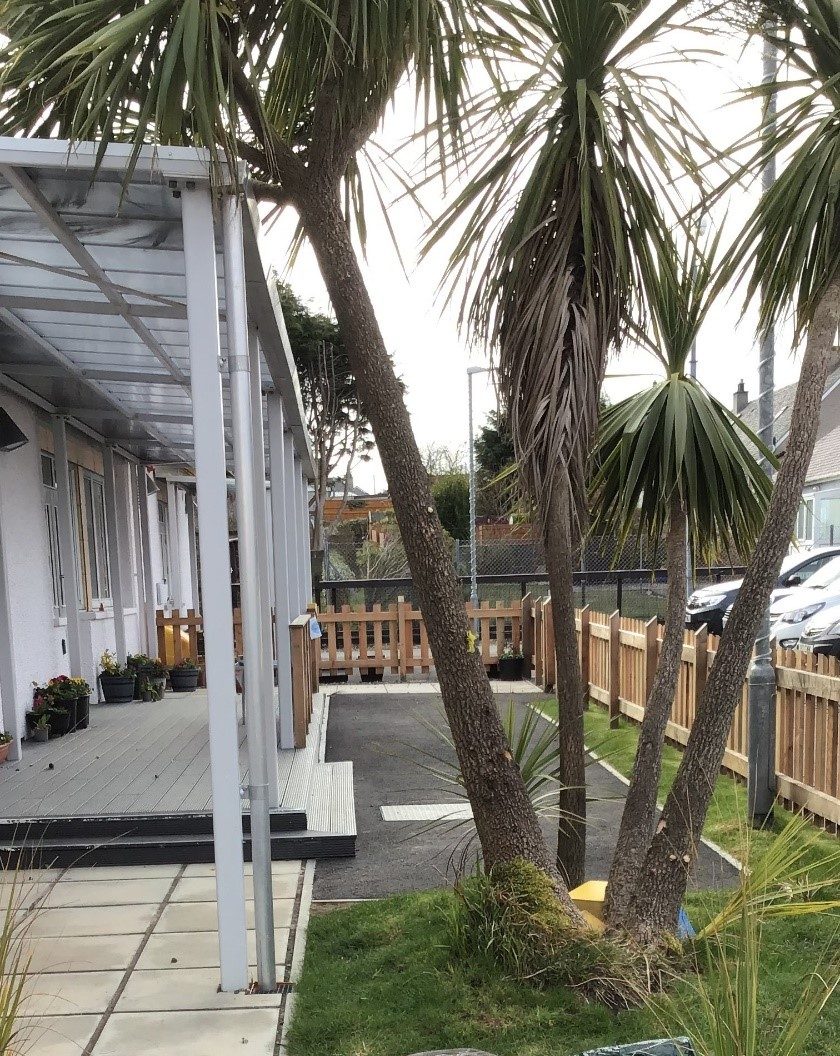
Wildflower Seed Planting
Following on from our previous blog, we set up our outdoor area for a socially distanced workshop with the Head Gardener, Jack, from the Stornoway Trust. There was a table top area for Jack to show us what we were going to be doing and the children sat on chairs and mats to watch.
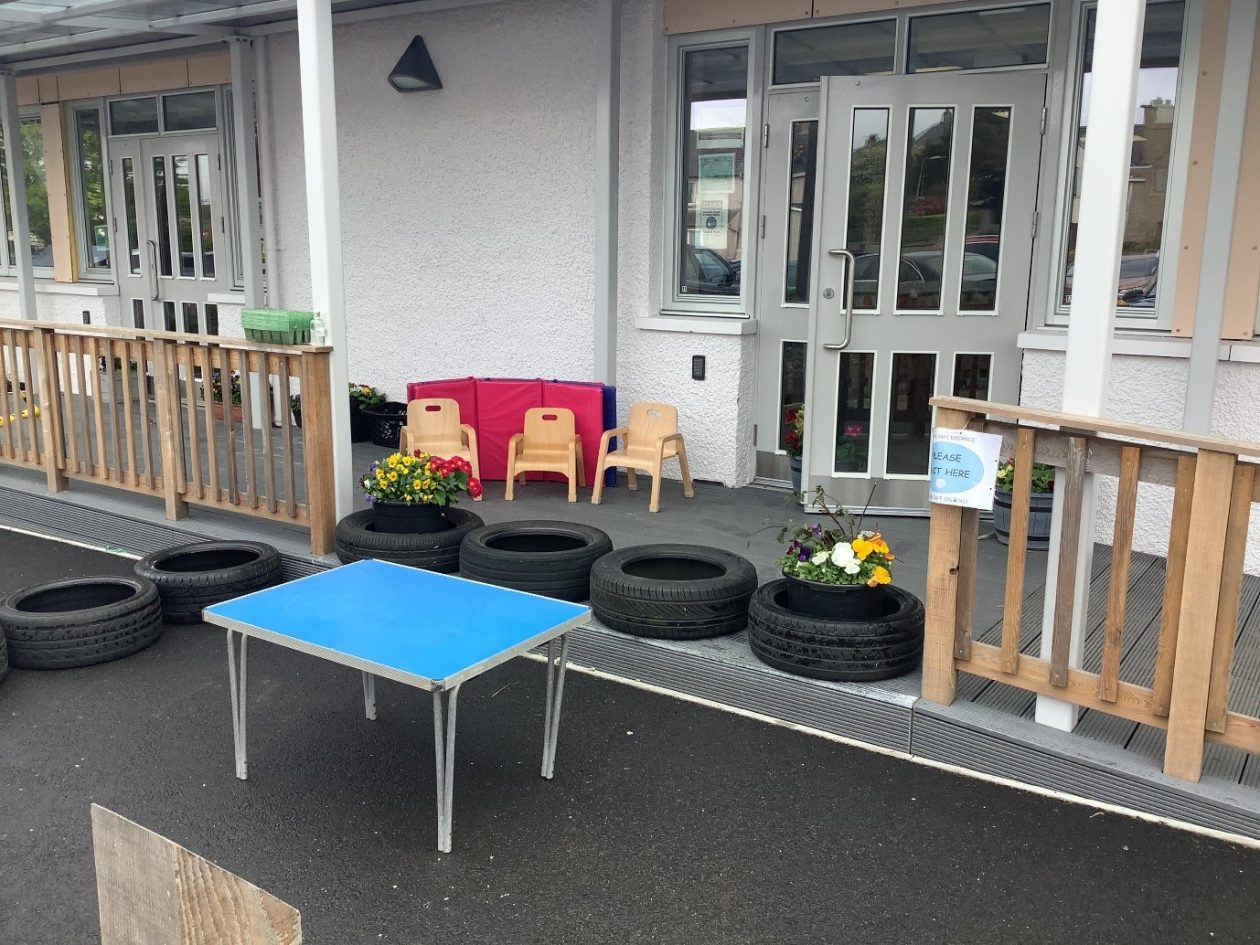
Jack told us the names of the seeds (including the “Hairy Vetch” which caused some hilarity!) and talked us through how to fill the trays and sow the seeds. Jack also provided us with some plants and pots to create our own miniature gardens. The children then split into 2 groups and went with the staff to get started.
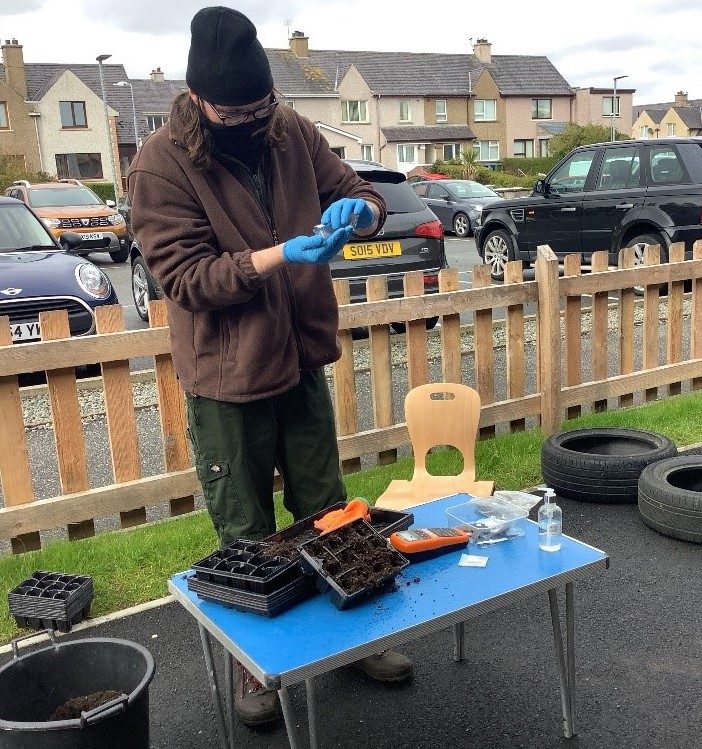
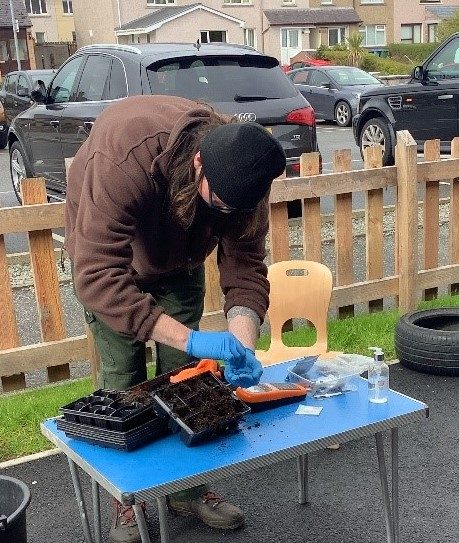
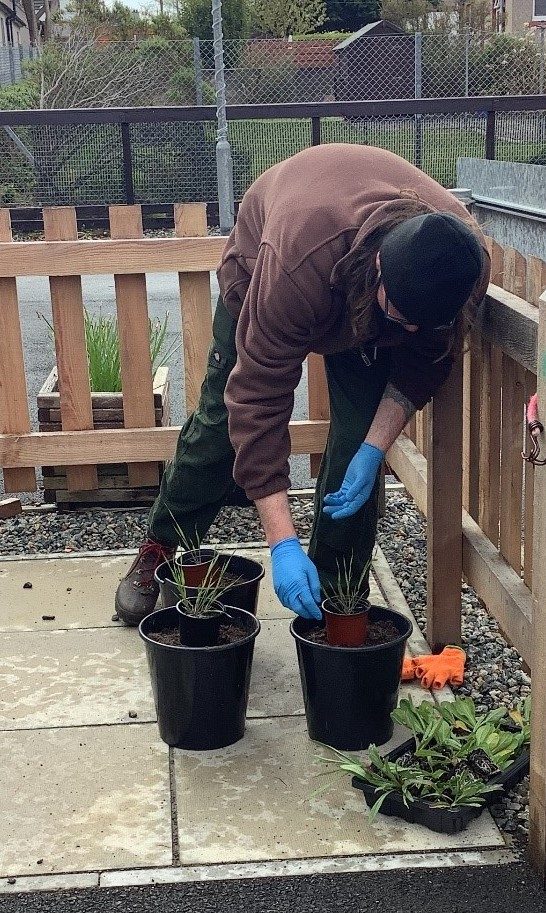
The children engaged brilliantly – they were interested and enthusiastic and got stuck straight in. They helped to scoop soil, patted it down into the trays, poked holes with their fingers and scattered seeds throughout. They also helped to dig out space for re-potting the plants for the miniature gardens.
Here are some of the comments from children:
“It’s going to grow ginormous”
“Hairy Mummy Vetch”
“We’re planting”
“Me and my friend* are growing something”
“We are planting”
*Child mentioned their friend’s name but this cannot be included for the purposes of this blog
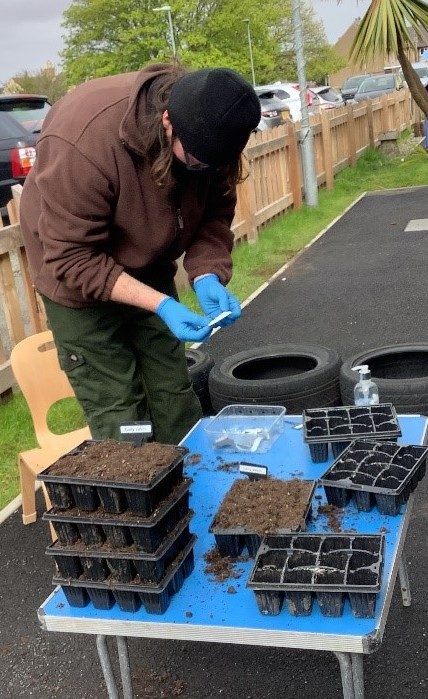
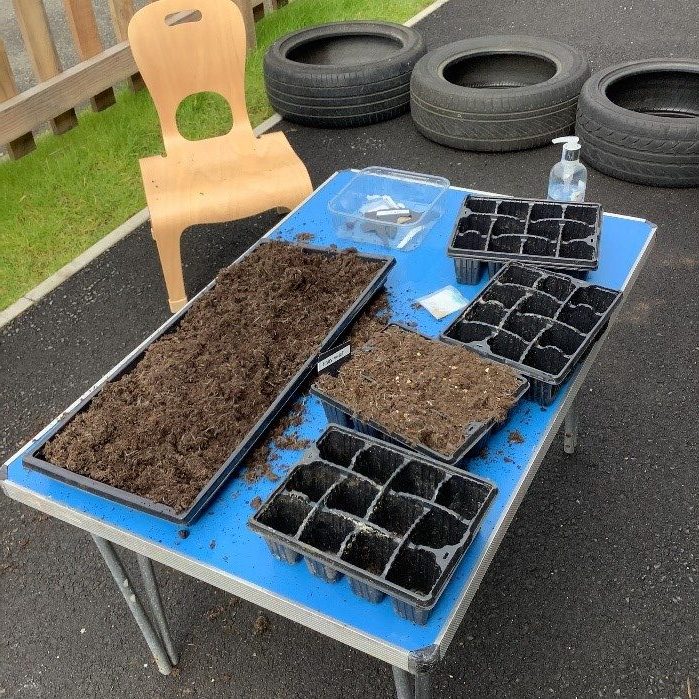
Jack made up some labels for the “Hairy Vetch”, “Yarrow”, “Cornflower” and “Bishops flower” and the children put them into the correct trays with a little support.
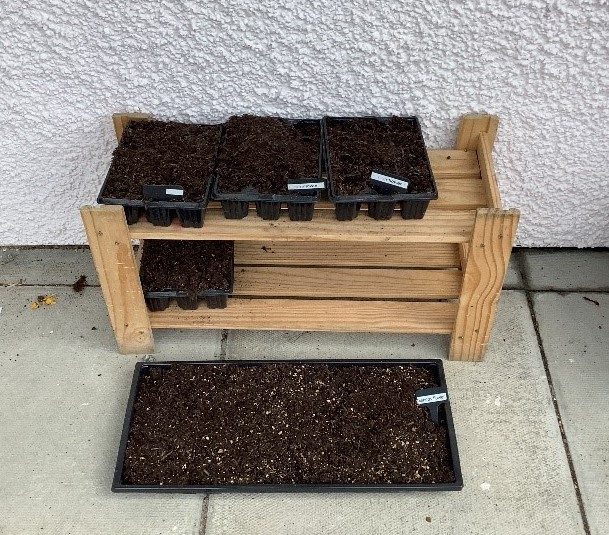
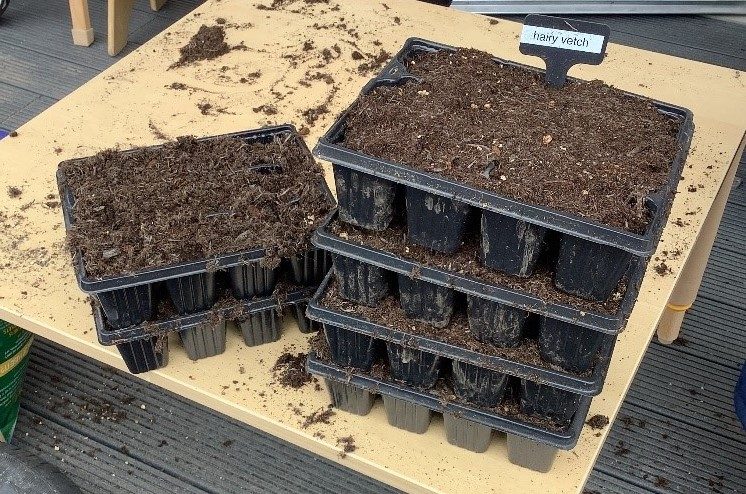
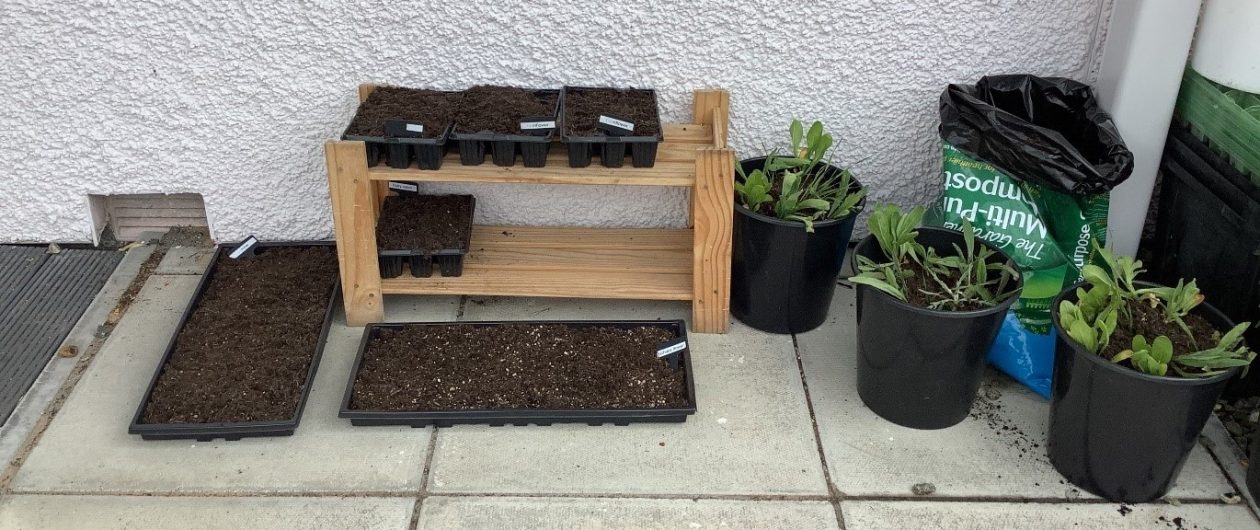
We have set aside the pots and the children have all been participating in caring for the pots and plants, watering them and checking them to see any changes. Some of the trays now have seedlings sprouting through the soil.
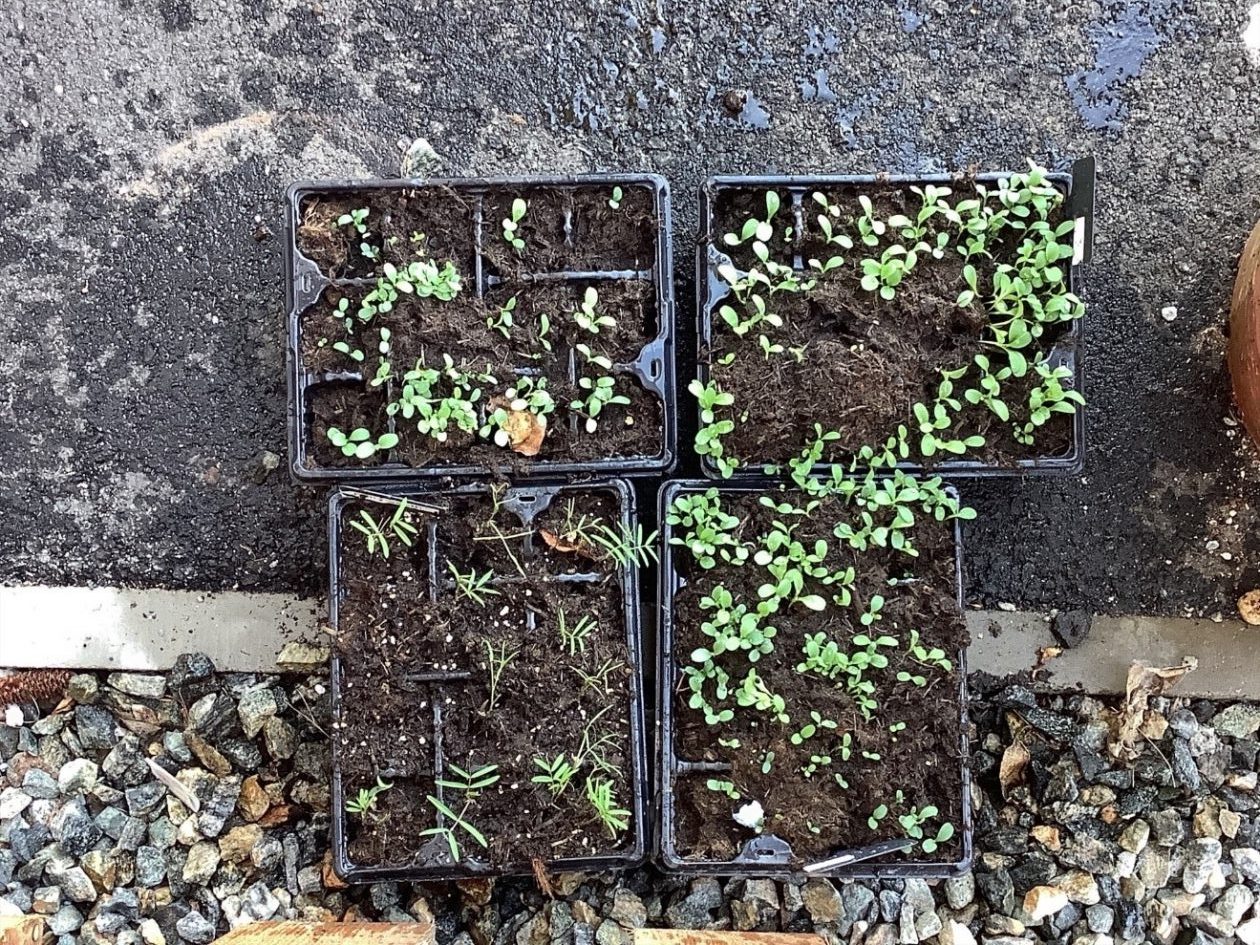
We are going to do a further follow-up Wildflower activity once the wildflowers are ready to be re-planted out into the Castle Grounds. So keep an eye on this blog for further news on that!
Wildflower Seed Planting Workshop
Continuing on from the “Nature” theme of the Mental Health Awareness Week (10th-16th May), we have been looking into further ways to extend our opportunities for planting and growing within the nursery setting.
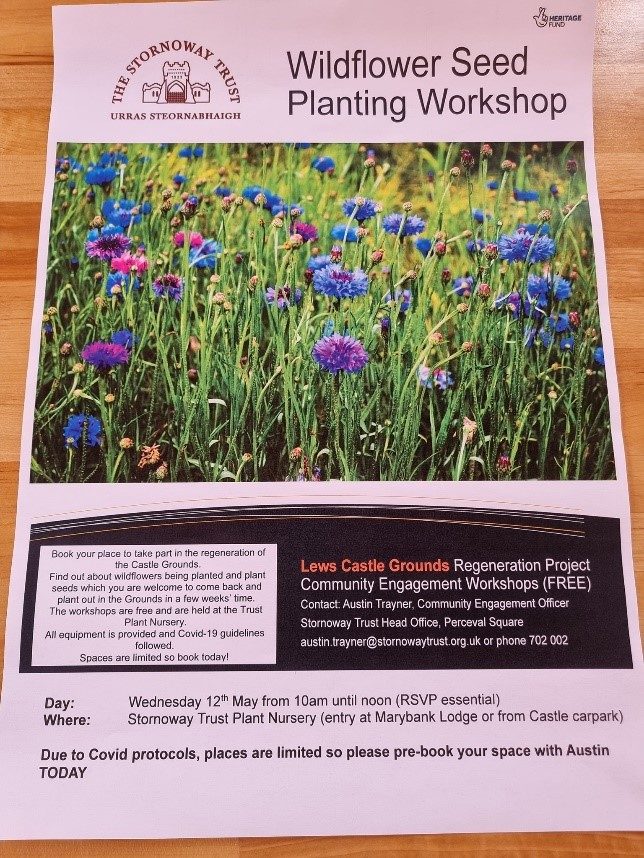
One of our staff team members came across this advertisement for a local workshop at the Stornoway Trust Plant Nursery, and it was thought that it would be a fantastic community project for the nursery to get involved in. The staff member attended the workshop, learning about wildflowers, and engaging in the planting process by mixing soil and sowing seeds in order to begin the plug-planting method. The workshop was really interesting and informative and a great way to get involved in a project that is developing and enhancing areas in the local community!
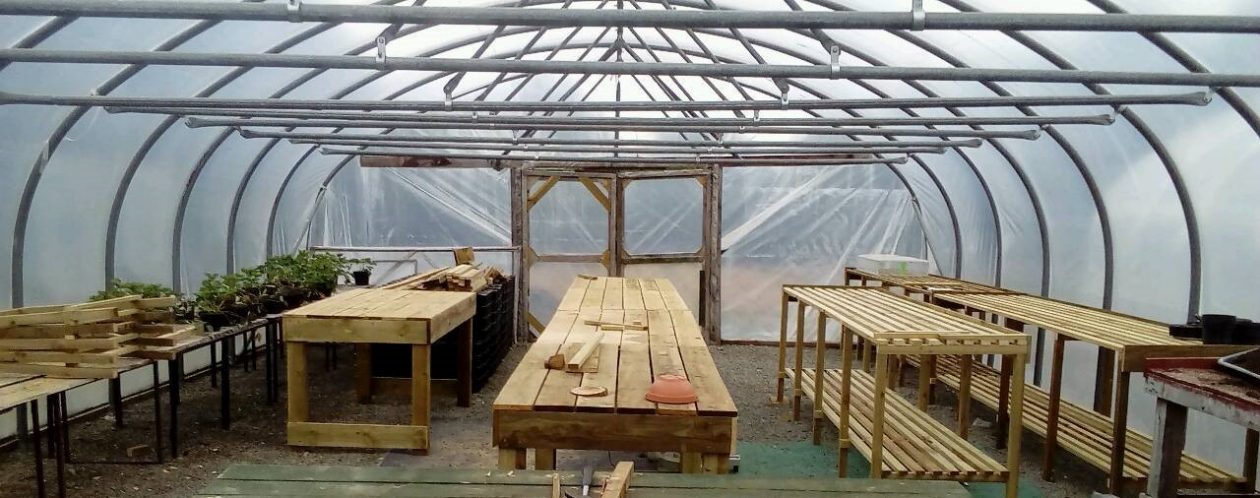
Picture from the Stornoway Trust website –
We have now arranged for the Head Gardener to visit us to do a talk where the children at nursery will have the opportunity to engage with staff to participate in planting wildflower seeds. Some of the pots will be taken to the polytunnels up at the Plant Nursery and we will also be keeping some at nursery in order to water them, tend to them and watch the germination process over the coming weeks. We will then be arranging to plant these out into the Castle Grounds in order to help in the regeneration of several wildflower meadow areas. These garden areas will be enjoyed for years to come and the children in our nursery will be able to look back and recall that they helped to plant the wildflowers!
